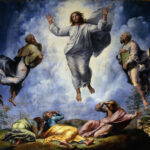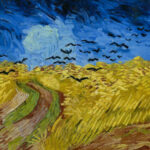Introduction
I came up with this reckless idea: introducing my take on the readings for the Sunday masses, a quasi-homily if you will. Particularly questionable because I’m verbose, while the goal of homilies should be clarity and conciseness. Furthermore I don’t have much time and I’m a procrastinator. We’ll see.
Why the Pseudo-Homilies From a Layman? While I am strongly against allowing lay people to preach during Mass, I do hope I have something meaningful to say in these pages, which represent an entirely different context. At any rate, this will be an interesting personal journey.
It’s hard to do worse than those priests who regularly inflict some 20-minute tirades on their parishioners; tirades that contain big words and empty rhetoric, but contain only a single message: people, oh you people! Try to be good! And responsible!
As for the doubts about my personal motivations: there was one day, before leaving home for a pilgrimage to the Holy Land, in which I asked God in prayer if I should, perhaps, become a priest. Then, on that very trip, I met my future wife. A love that seemed infused with blessings and literally began between the Grotto of Bethlehem and the Holy Sepulcher in Jerusalem.
I would not have been a good priest: if a bishop had ordered me to celebrate with an altar-table, I’d have refused to do it (and this is just one of the possible examples). I would have told him that if he wanted me to celebrate mass like that, I’d rather not celebrate at all. Which means I wouldn’t have lasted long in the position anyway.

Miracle of the blind born man, Christ restores sight to the blind, by the Genoese artist Orazio De Ferrari (1606–1657).
I recommend going through the readings first:
Fourth Sunday of Lent – Year A
The theme of this day: God knows us from within. He sees realities we ourselves can’t even imagine. Starting with the episode in which the prophet Samuel is called by God to choose a king for Israel: out of many brothers, he chooses David, who was the youngest in the family. A young boy: his father didn’t even think of calling him to meet the prophet, hence he was grazing the sheep (a sort of pre-Cinderella, if I may… and who knows if that fairy tale didn’t take its cue from here).
This idea of finding value where men would never even imagine possible, confusing the wise and elevating the humble, is a recurring theme in the Gospel, and many homilists will spend appropriate time illustrating it (the stone rejected by the builders, the genealogy of Jesus which also contains undesirables, his humble birth and infamous death on the Cross, the uncouth manners of the peasants chosen as Apostles beginning from Peter, etc.).
But here we find something remarkable that needs to be highlighted, because I believe no one has ever spoken about it, least of all in a sermon.
A gem. The miracle on the blind man seems to take into account knowledge of human physiology that was unthinkable at the time: no author, however intelligent, could have invented a story like this from scratch, if not for an extraordinary coincidence.
Today’s Gospel represents a very rich and detailed extract, which offers us significant and well-explored themes to discuss: the hostility from the Pharisees who refuse to believe in Jesus, but are also convinced that misfortunes (including congenital diseases) are punishments for past sins, and have the narrow-mindedness to object to a “work” (miracle) performed on the obligatory day of rest for the Jews, the Sabbath…
But the thing that struck me years ago, which deserves to be called a gem, is the following: why, oh why this Jesus who on so many other occasions performed astonishing and instantaneous miracles, who even defeated death, visibly and in advance with the resurrection of Lazarus, the Jesus who can say “Get up and walk”… why does He, in this case, set up an apparently complex and lengthy procedure?
First he makes mud with earth and saliva, then he spreads it on the eyes of the man born blind. Who’s then to go to the pool of Siloam, wash his eyes, and finally, only at that point, he gets the ability to see for the first time.
Between the lines we can appreciate the aura of a true story, which even contains the echoes of the objections from the skeptics. An observant Jew could easily have thought that the real miracle was to be attributed to the pool of Siloam. A follower of traditional medicine could claim that maybe special ingredients were contained in that mud application: the episode could describe a medical treatment, albeit rudimentary. What about those who thought he was just practicing sorcery? Magic involves elaborate rituals (to confuse people and hide one’s inadequacy/ineffectiveness, I might add). But there’s more: the words from skeptics are also reported; they have to say, of the blind beggar who’s been inexplicably healed: “he just looks like him!”
Definitely a story in the style of the Gospels: with a narration that reminds us of modern chronicles; a direct report, containing disparate voices, even those counterproductive to the cause. Thus we’re presented with an official investigation from the authorities, involving even the parents of the formerly blind man: such a story strays quite far from the style we could expect from a hypothetical creative Christian community, bent on inventing amazing stories, as many exegetes still think.
The observation that struck me at the time: This is a special case. A man who’s blind since birth never developed the ability to see. Vision doesn’t involve just the eye and the optic nerve, but the nerve centers. The brain itself, in a person who’s always been blind, is organized differently, because the area dedicated to vision is repurposed for other mental faculties. Here we’re touching a very sensitive area; your mind is directly involved: it’s what you really are, as a being. Giving eyesight to those who never experienced it means reorganizing an enormous number of neurons in their connections; plus, from there, redefining perception, which involves the whole brain; this is a change to the intimate nature of this person.
We now know that, in cases where (thanks to modern medicine) it’s been possible to give sight to a human being for the first time, the first moments after removing the bandages are shocking, but also disappointing. The patient could not process all that new information; light and shadow, far and near objects, or perhaps objects partially hidden by obstacles… Then recognizing them in a rotated position… not to mention the three-dimensionality, which requires a special adaptation. A baseline of direct experience, since the brain must build a three-dimensional model that is not obvious per se, since it depends geometrically on the distance between the two eyes, which was also an unknown…
It’s not remotely comparable to getting your eyesight back if you had it for a while and lost it. Seeing for the first time, for an adult, requires a reprogramming at the level of the nervous system, and a long and gradual adaptation.
Jesus Christ can perform any miracle. Muscles, nerves and bones that have been non-functional or atrophied for years can instantly feel and work like new again, why not? A fiat is enough: an order from the Son of God. But the finesse involved in this case is the following: obtaining a perfect eyesight instantly with no prior experience would mean being brutally, heavily reprogrammed, right in the deepest recesses of one’s mind. And of course God can do this too, but he doesn’t want to do it, because he respects our freedom!
Jesus wanted to perform this miracle, but he did it in a respectful way, giving him time to have a gradual evolution, while the miracle worked in him.
Here we can find one of the least explored secrets of creation: God wants to work with us, wherever possible involving us directly, cooperating.
Let’s put ourselves in the shoes of this man for a moment: he walks with his eyes open, and they’re in the process of learning to see, but obfuscated by an increasingly non-existent veil of mud, which is probably gradually removed by tears. He still doesn’t understand what’s going on. We are too, in a way, in a similar situation: walking through life clumsily, trusting God to free us slowly, at our pace, from our blindness…
But let’s go back to the miracle, as seen from the point of view of skeptics. For me this is the striking piece of news: a detail of the story that remains unnoticed for centuries, until medical science makes it possible to realize that, yes, if we want to take into account human freedom and the complexity of the mechanisms of vision at the brain level, this it is precisely the kind of “delayed miracle” that was to occur in this case. And only in this case, not for other types of miracles.
Let’s keep this in mind, the next time some assuming know-it-all, typically a proud atheist, looks at us condescendingly: there are still gems to be unearthed, in these sacred texts; shards of truth that neither the authors themselves, nor their audience could know or even imagine. Yet they are part of the Gospel, as a passive reflection of a greater reality. Greater than them. And greater than us.
Aaand as expected, I couldn’t be brief.










































